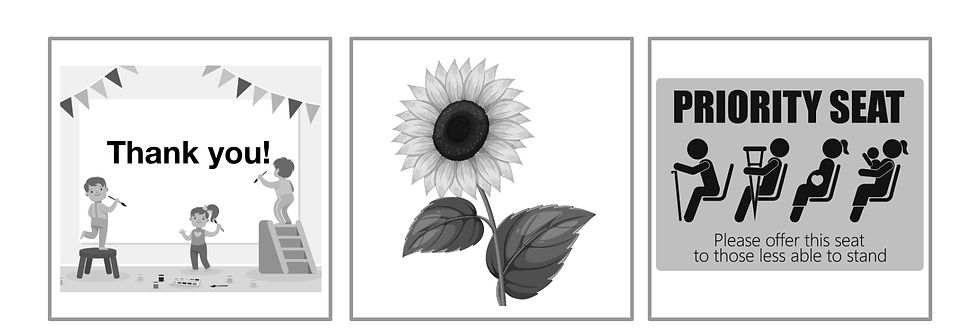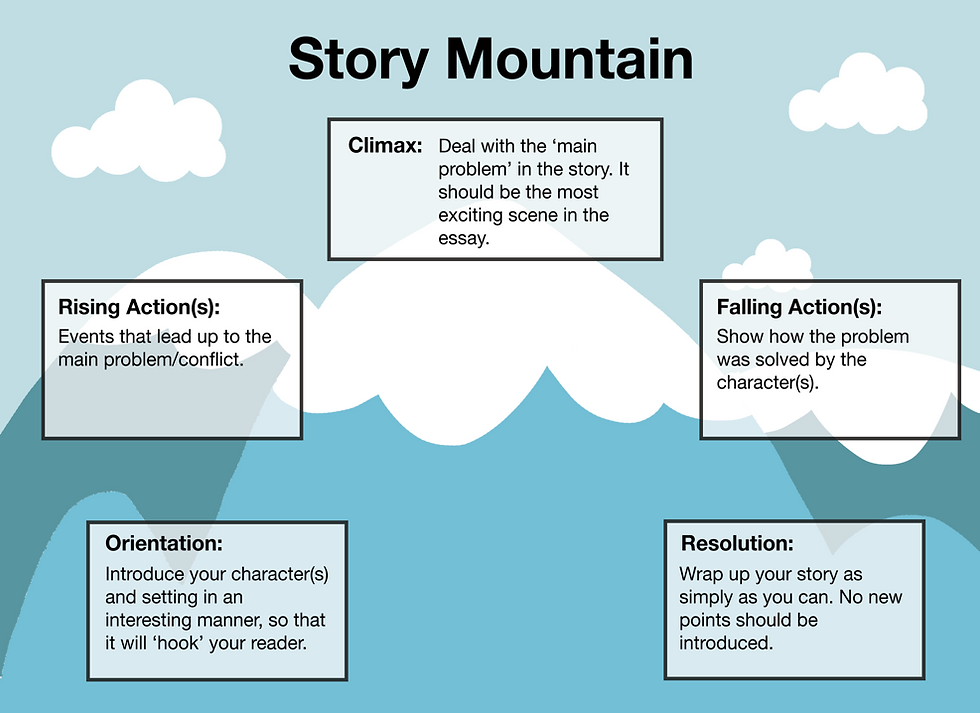TWC’s Take on the 2025 PSLE English Composition Topic
- The Write Connection

- Sep 26, 2025
- 4 min read
The topic for the 2025 PSLE Continuous Writing segment was "Being Thankful", with picture prompts similar to those shown below. In this article, we would like to share how we would have guided our students to plan and approach this composition topic effectively.

The 2025 topic was similar to one which our P6s tackled earlier in the year, called "Appreciation". We also covered the topic "Going the Extra Mile" in P5, which included a picture of a thank-you card. While it is natural to feel relieved if the topic that comes up is the same as, or similar to, one that has been encountered before, do take note that the pictures are unlikely to be the same. Hence, it is not advisable for students to try to re-hash a story they wrote previously, as they run the risk of not using the given pictures meaningfully.
At The Write Connection, we train our students to be nimble on their feet, to think creatively, and to be ready to tackle any topic with verve and confidence. Thus, our students are well-equipped to handle Continuous Writing without depending on any formulas of plot or language.
Let’s use TWC’s HEAD approach to analyse this year’s topic.
H = Highlight the key words
Key word = "thankful" = feeling and showing appreciation/gratitude to someone for a kind act.
The topic is straightforward to understand, but it may not be as easy as it seems to craft a compelling story about being thankful. If you recall the Story Mountain framework, you will remember that a Climax is needed to give your story a high point and to add shape and flow. Without this, a narrative about being thankful might otherwise be rather dull, as it would not naturally include a lot of high drama or action scenes. In order to make our story more exciting, we need to add an element of difficulty or conflict. Let’s move on to the next step while keeping an open mind.
E = Examine the prompting questions
The prompting questions give us helpful hints about what we need to include, and even remind us about certain elements of the plot. For example, for this topic, here are some prompting questions that could have been provided:
Who was thankful and why?
How did the character feel about the experience?
What happened in the end?
The first question helps us focus our attention on the basic plot points that we need to cover in the story.
The second question gives us a helpful reminder to add descriptions of our characters' emotions, to add colour and interest and to help paint a more accurate picture of our characters' personalities.
Lastly, the third question reminds us to tie up all the ends and finish strongly, to leave readers with a positive impression of our story.
The prompting questions are thus important signposts for the story, and should be answered to ensure a well-considered exploration of the topic.
A = Analyse the pictures
The next step is to choose a picture. Which of the three pictures do you think we should use to write a story on "Being Thankful"?
While all the pictures are fair game to use as a base for a good story, some may be more strategic than others. In this case, the sunflower is the hardest to use, because it is the least specific. A sunflower can be used to say “thank you” to someone, but it doesn’t give us any hints as to why we are saying thank you, so we would need to use precious time to come up with a plot from scratch.
The easiest picture is the Priority seat sign, because the reason for being thankful is obvious, with a clear setting provided and strong plot points easier to achieve. The picture of the whiteboard can also be a good choice, provided that you restrict the number of characters and simplify the storyline, otherwise a classroom setting involving lots of people could be confusing.
D = Develop the plot
The final stage is to plan out the plot on a quick sketch of the Story Mountain framework. This will help students to crystallise their thoughts and keep on track as they write. Adhering to the Story Mountain framework will ensure that students write a strong and engaging plot with an impactful beginning, an exciting climax, and a satisfying conclusion.

When students follow the HEAD approach, half the battle has already been won! They would have set themselves up to write a composition that keeps to the topic, answers the prompting questions, and uses the picture meaningfully, all with a strong and compelling plot. When students combine this with the writing techniques they have learnt with us, the end result is an engaging story that stands out from the crowd.
These expert tips were brought to you by our Curriculum and Teaching Service Quality Teams.
2026 Registration is now open! Save up to $410* when you enrol with us by 15 Nov 2025. Get in touch with our friendly centre teams to sign up or find out more about our primary and secondary classes.
*T&Cs apply.



